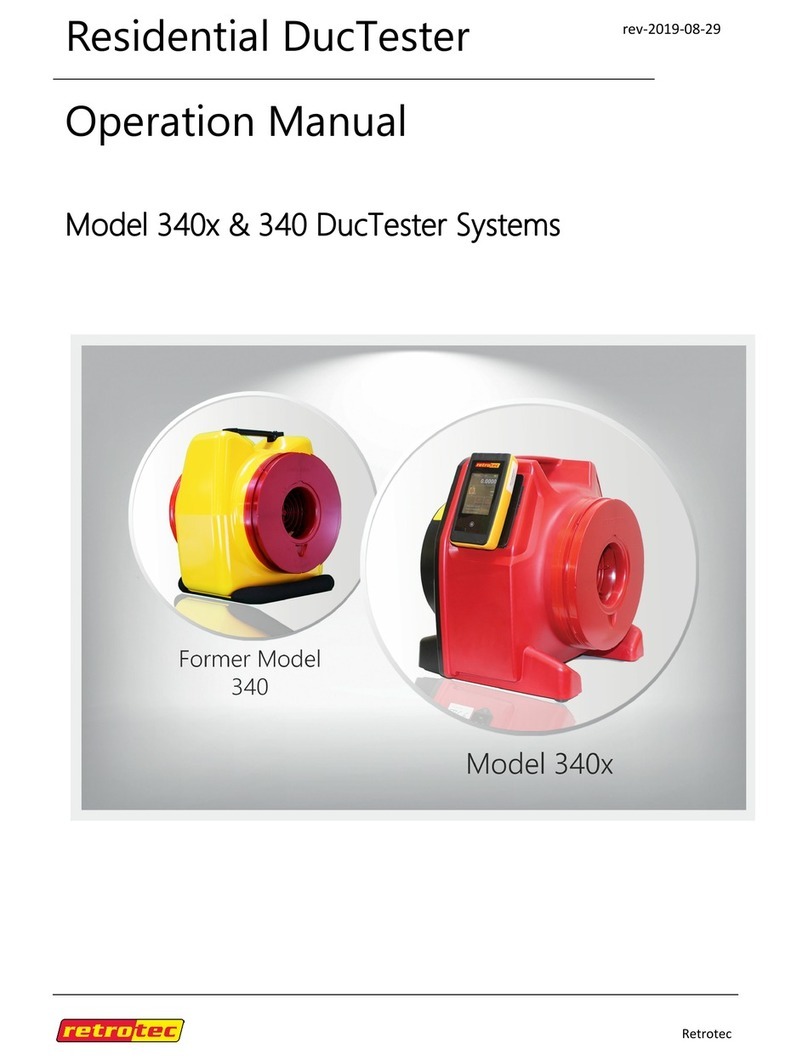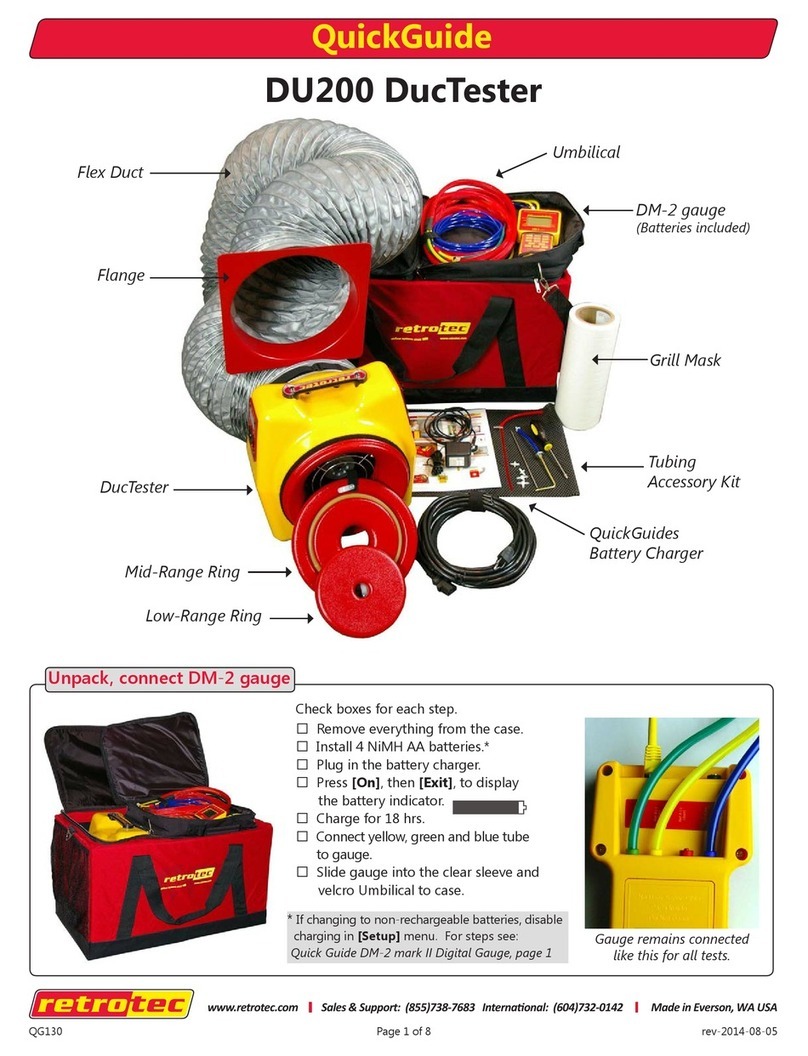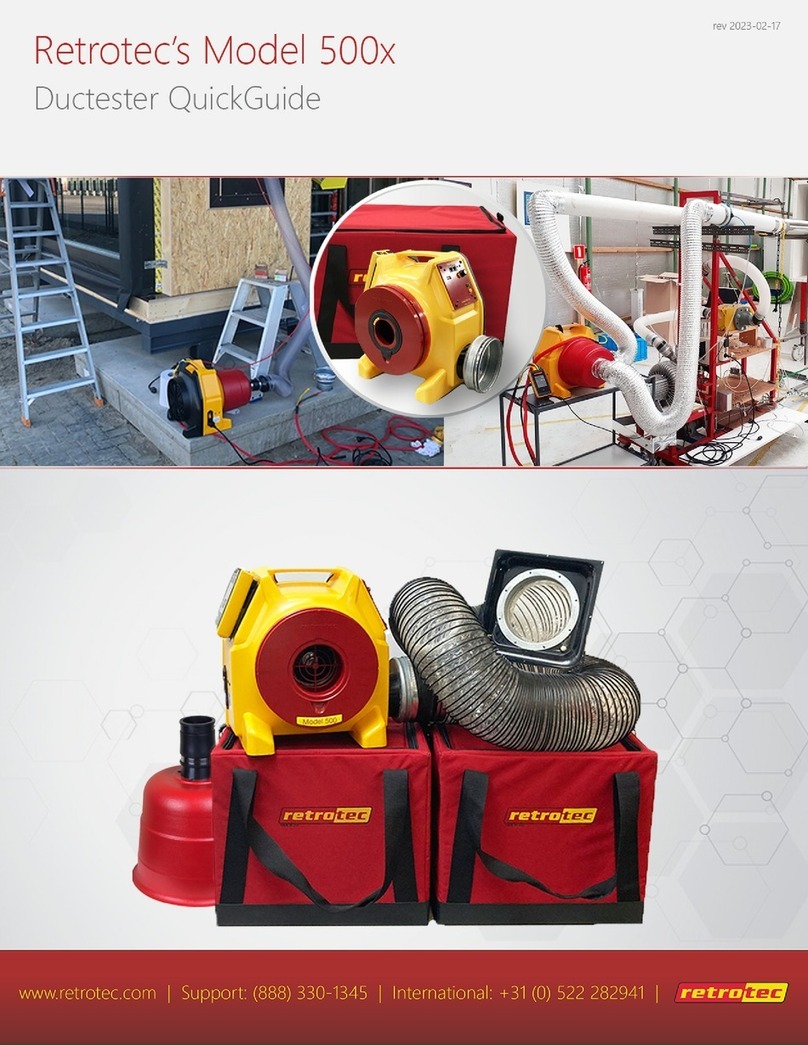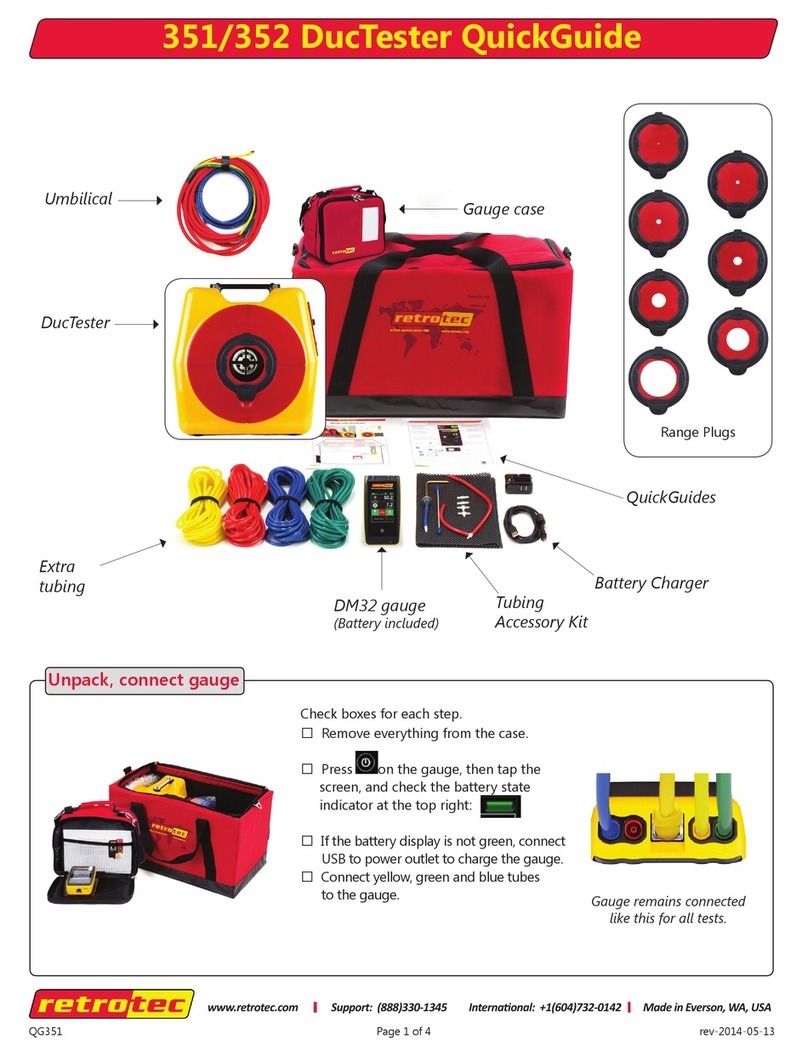Page 7 of 58
©Retrotec Inc. 2015
Important equipment-related safeguards
When using electrical appliances, basic safety precautions should always be followed. If Retrotec
equipment is used in a manner that does not follow the information provided in this manual, safety to
the operator and equipment performance may be impaired.
Please read the following carefully before using your DucTester:
•Avoid contact with moving parts.
•Special attention should be made to keep children and pets away from the fan when it is
operating.
•Do not insert anything into the fan casing while the fan is moving.
•Ensure that no debris is inside the fan casing before operating the fan.
•Keep hands, hair and clothing away from fan at all times.
•The fan can cause damage or injury if it were to fall on someone/something.
•Do not use equipment for other than its intended use.
•Do not stand on the fan, or use the fan to support the weight of another object.
•To protect against risk of electric shock, do not place this equipment or power cord in water or
other liquid.
•Press the power plug firmly into the power receptacle on the fan. Failure to do so can cause
over-heating of the power cord and damage the fan.
•Do not use ungrounded outlets or adapter plugs. Never remove or modify the grounding prong.
•Do not operate any device with a damaged electrical cord, or after an equipment malfunction.
•Use only the included power plug to operate the fan.
•Turn the unit off and unplug from any electrical outlet before moving and when not in use, or
when making any adjustments to the fan motor or electrical components.
•For use under indoor conditions only.
•For use where there is no exposure to water or dusty substances or explosive materials or
flammable materials.
•Ensure proper cooling of the fan motor.
•Equipment is intended for diagnostic testing and to be operated for brief periods under
supervision by a qualified operator. Not to be used in a role as a household appliance for the
purpose of moving air.
•Failure to follow these instructions carefully may result in bodily injury, damage to property
and/or equipment failure. Failing to operate equipment as intended may void warranty and
compliance with CE mark and other listings.
Important occupant safeguards during testing
Please read the following carefully before carrying out tests:
•If dust, pollen, mold spores, chemicals or other undesirable substances can get blown into living
spaces, keep those susceptible to these substances away from the test area, and wear dust
masks.
•Do not pressurize a duct system with air that is polluted or exposed to any toxic substances. For
example, blowing air from a car-port into a house or duct system while a motor vehicle is
running can quickly fill a house with toxic carbon monoxide.
•If combustion safety problems are found, tenants and building owners should be notified
immediately and steps taken to correct the problem including notifying a professional heating
contractor if basic remedial actions are not available.
































